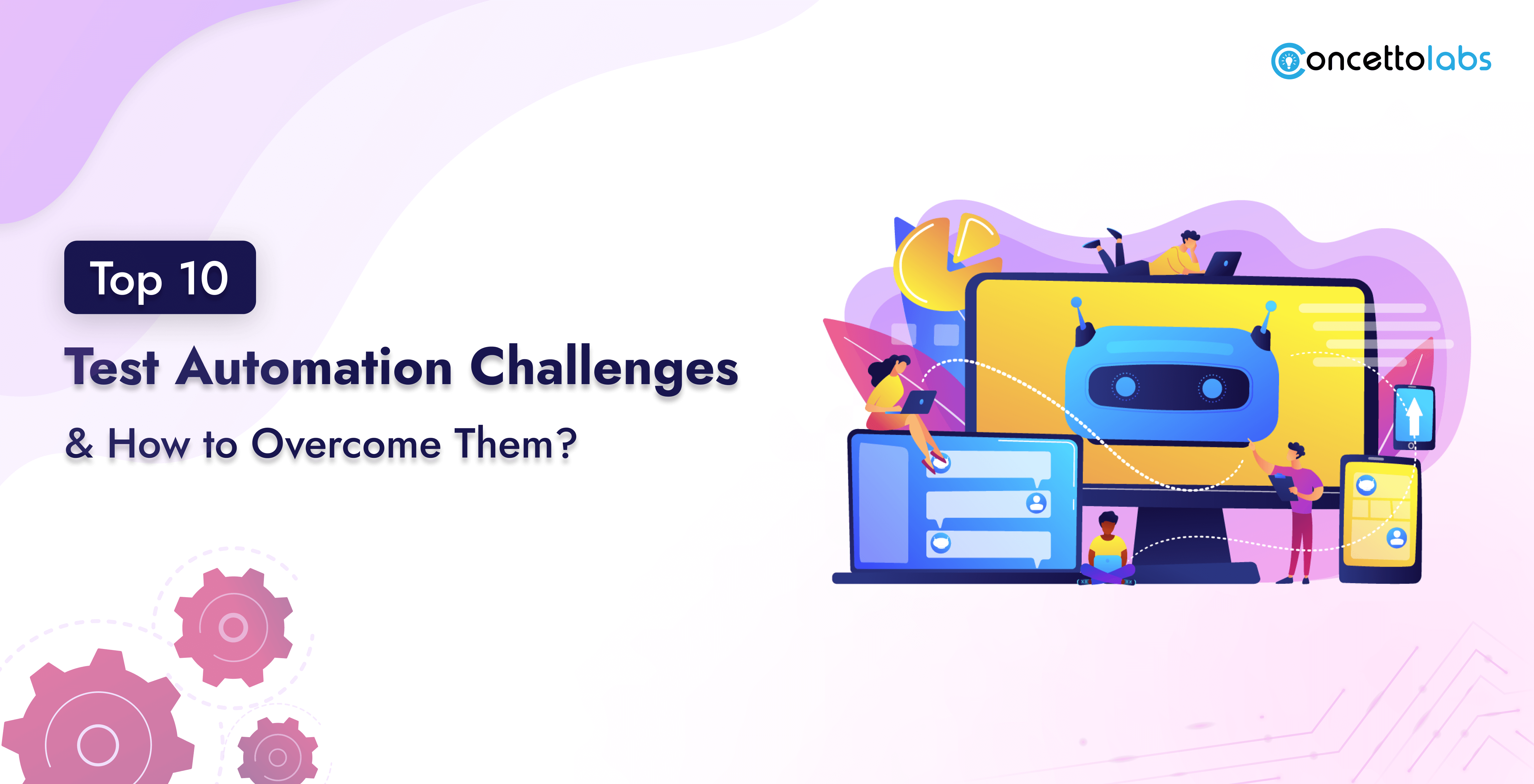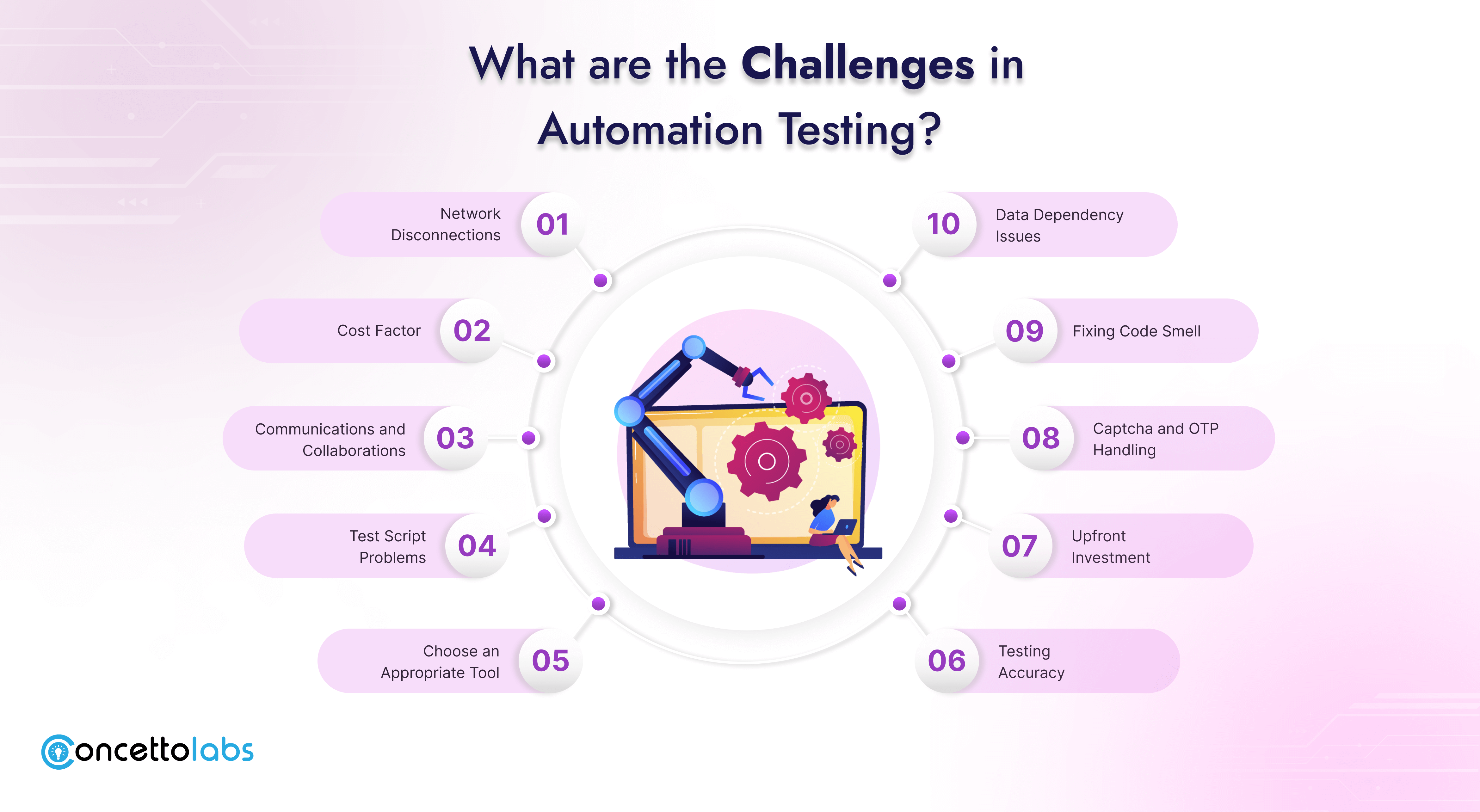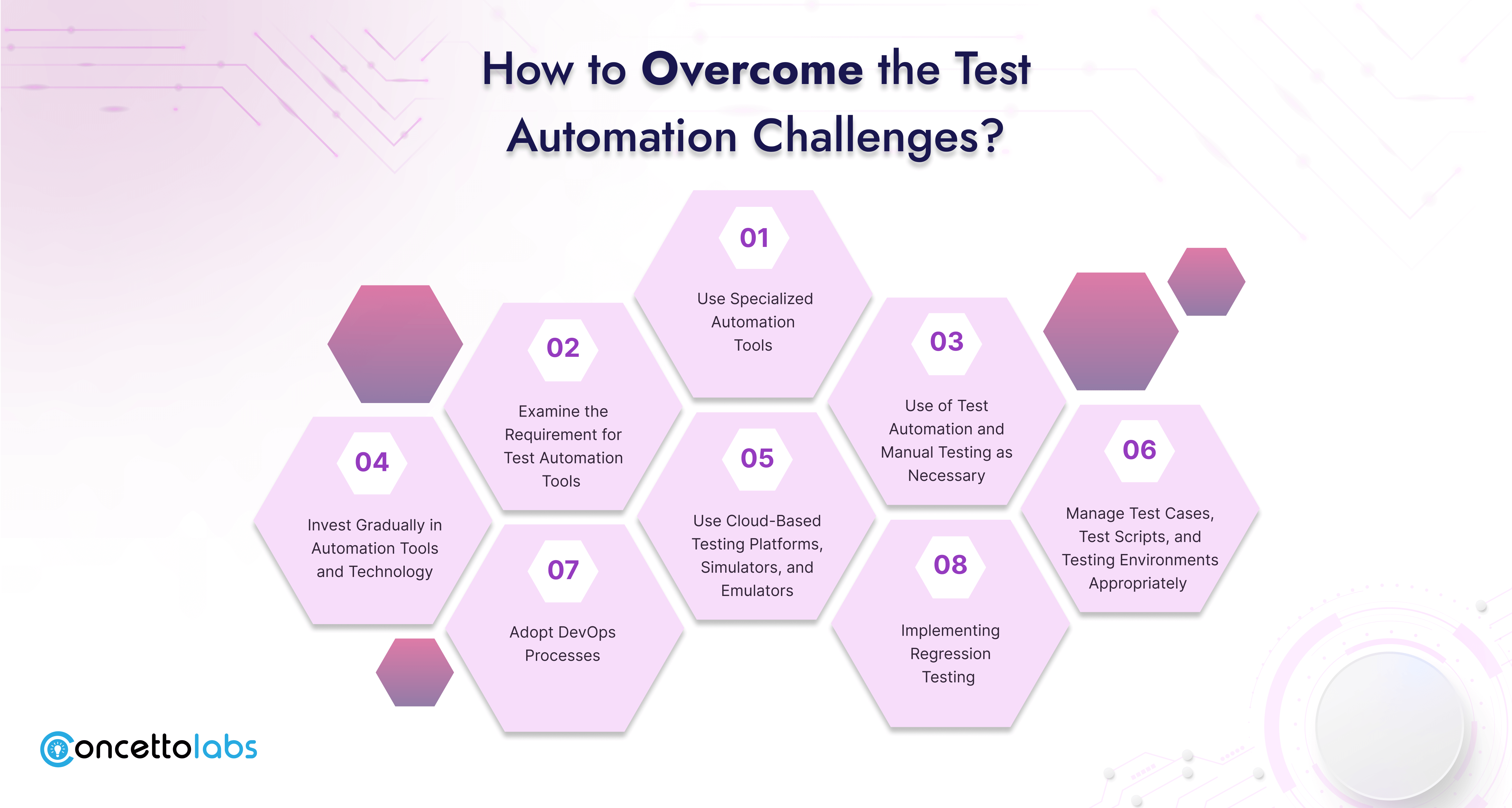
A risk is an occurrence of an unexpected event with a negative effect. An untimely risk mitigation can have disastrous consequences, including lost business revenue and even fatalities.
Automation has gradually permeated every industry, starting with the earliest computers and continuing through the current smartphone. It is also altering our perspective on day-to-day living. We have now entered a new era of technology with the introduction of robotics and the impact of Artificial Intelligence.
Nowadays, having a strong automation system is necessary for developing software. In a perfect world, the system would run tests on several devices simultaneously, speeding up the results. Additionally, it gives engineers more time to develop new test cases, develop tools for thorough testing, and participate more actively in reviewing code. They can create new scripts and code rather than repeating the same test several times.
But considering how essential automation testing is to the procedure, one needs to be aware of its drawbacks. Automation pipelines will almost definitely encounter certain obstacles or loopholes, and teams can better manage these problems if they are aware of them.
What Role Does Automation Testing Play in Business Growth?
The primary motivation for using automated testing is to provide a superior product with outstanding performance and benefits. With a quicker time to Market (TTM), it leads to a notable decrease in maintenance expenses and a notable boost in software performance. Because automation challenges eliminate the need for human intervention in any way except test maintenance, it can result in significant cost savings. The main goal of the automation testing service is to use scripts to simplify testing.
What are the Challenges in Automation Testing?

One of the main elements of a software development company is an efficient continuous testing process. End-to-end automated testing is required for continuous testing to understand application quality better early in the development cycle.
It is as good as it sounds. But switching to an automated testing technique usually requires addressing common errors, which can make this phase difficult, just like any other development process.
Check out the major challenges in Automation testing and how Concetto Labs will overcome those challenges.
1. Network Disconnections
Network disconnection is an automated issue that QA teams commonly face. This causes them to have trouble accessing databases, VPNs, third-party services, APIs, specific testing, etc. due to unstable network connections. Network failure causes unnecessary delays and trouble in the test automation process.
In addition to disconnections, the inability to access virtual environments, which testers typically use to test applications is the other reason for concern. To address the issues as soon as they arrive and keep the entire software delivery pipeline unaffected, QA teams must have an effective monitoring system.
2. Cost Factor
The fact that test automation has grown to be an essential component of software testing should come as no surprise. In addition, automation is expensive, particularly in the beginning. As a result, if money is less, you need to give it another thought because the implementation will be more expensive and involve software license fees. Similarly, choosing an open-source solution will result in training and maintenance expenses, which balances everything out. Therefore, be sure to properly pitch the management.
3. Communications and Collaborations
Without Cooperation, automation testing services are unable to operate. Compared to manual testing, it undoubtedly necessitates greater communication between all parties involved and commercial alike.
A plan must be discussed with developers, business analysts, project managers, technical architects, and even a sample group of customers to determine which tests need to be automated. The test plan, scope, and timeline of the test strategy need to be as precise as possible right from the beginning because automation technologies need a substantial financial outlay.
4. Test Script Problems
If QA teams lack the necessary coding skill sets, they can encounter a variety of issues with test scripts. Teams can tackle these concerns and maintain their code by using the reusability of the reuse test scripts. By executing test code as production code, they can maintain the code. In addition, it is important to plan debugging sessions, identify critical problems with object identifiers, and conduct periodic code testing.
5. Choose an Appropriate Tool
The most important aspect of the testing process is choosing the appropriate tool. A lack of knowledge might cause problems throughout the entire development process. Typically, testing includes functions, regression, unit, integration, and other tests. Aside from that, the difficult issue is determining if your project requires manual or automated testing. Before choosing any tool for the project, be sure to take a close look at these factors:
- Get details about the project requirement
- Technical help and support
- Hassle-free maintenance
- Costing
6. Testing Accuracy
Executing processes on out-of-date data will result in erroneous outputs, which are among the most frequent automation errors. To prevent such errors, a team must be in sync with one another through a single channel that facilitates straightforward communication. However, to boost efficiency, QAs must also work on a solid analytical solution.
7. Upfront Investment
Implementing outlay usually involves a costly initial phase. The process involves analyzing, designing, and constructing libraries, reusable functions, and other automation framework components. In a few situations, license fees can be additional to the regular operating expenses. It is important to consider the expenses associated with training testers to use open-source technologies like Selenium or Appium, as well as the setup costs for a device grid.
8. Captcha and OTP Handling
As everyone is aware, OTP and Captcha values fluctuate with each creation, making them unpredictable and impossible to resume. For instance, automating payment gateways, registering new users, and other services that demand Captcha and OTP are challenging tests.
This might also be interpreted as evidence that human testing is inevitable and that an application cannot be entirely automated.
9. Fixing Code Smell
A code smell is essentially a feature’s program’s code that detracts from the design quality. Upholding the code quality is crucial for testers as well as programmers. Code smell issues can assist a QA team in achieving:
- Quick test results in less execution time
- Contributes to strengthening the automation test suite
- Cut down on the amount of work and money needed for upkeep.
Manual reviewing is not able to detect the majority of code smells. The usage of automated code review techniques to find every bad smell present in the source code is common.
10. Data Dependency Issues
One of the main issues with test automation is test management. The data must be in a specific state for the test script to execute, otherwise, it can cause serious issues in various situations. Eg: what would happen if the test script was executed concurrently in various test environments and configurations?
Will it work in other script instances that use the same data? Any changes made to the data in one test execution instance have the potential to break another.
Execute Automation Without any Hurdles
Hire our QA Engineers!How to Overcome the Test Automation Challenges?

Check out the solutions to overcome the test automation challenges:
1. Use Specialized Automation Tools
To get over the difficulty of choosing the best automation testing tool, it is usually advisable to choose industry-leading tools because they are reputable and used by various top firms. Additionally, there is great community support available for these products.
2. Examine the Requirement for Test Automation Tools
To overcome the challenge of choosing the best test automation strategy, testers should first determine the need for test automation. They can then brainstorm on how to frame an effective test automation strategy based on business needs, current IT infrastructure, technology stack, tools required, etc.
3. Use of Test Automation and Manual Testing as Necessary
To get around the problem of having high expectations for test automation service, it is usually advisable to use both automated and manual testing. Not every circumstance calls for automated testing.
4. Invest Gradually in Automation Tools and Technology
To get around the problem of large upfront investment expenses, it is advisable to embrace automation tools and technology gradually as opposed to investing all at once.
5. Use Cloud-Based Testing Platforms, Simulators, and Emulators
To overcome the difficulty of testing an app in a diverse environment, it is advisable to use simulators, emulators, and cloud-based testing platforms rather than obtaining genuine devices.
6. Manage Test Cases, Test Scripts, and Testing Environments Appropriately
To address the issue of tests brought on by false positives or false negatives, it is always advised to manage test cases, test scripts, and testing environments appropriately.
7. Adopt DevOps Processes
To address the issue of inadequate teamwork, it is recommended to embrace and implement DevOps procedures that break down the divisions between testers and guarantee smooth cooperation.
8. Implementing Regression Testing
Regression testing is a useful tool for ensuring upgrades or modifications to an application’s code that does not interfere with its operation. This helps to maintain feature performance and stability. To finish testing in less time, TestCase Prioritization is required due to the large number of regression tests.
Optimize Your Test Automation Today!
Contact Us Now!Conclusion
The type and scope of your automation testing, your budget, and the automation tool’s compatibility with the technological and business-related needs of your company can all help you determine the deal.
A test automation tool selection process should take your organization’s technical and business requirements into account, as well as the type and scope of your automation testing and budget. It is important to start early and monitor for top common test automation hurdles because QA teams occasionally encounter difficulties and failures with test automation.
Hire QA engineer from Concetto Labs, if you are in search of a one-stop solution for test automation tools to expedite the creation and execution of test cases. It enables you to conduct automated tests in a massive cloud test lab by providing a consistent end-to-end test automation platform.
The comprehensive analytics and report tool facilitates the retrieval of dynamic test reports at every level, enabling the analysis of test care outcomes and prompt resolution of critical problems.
Frequently Asked Questions
Here are some frequently asked questions about employing our developers that may help you.
- Inadequate communication
- Missing Documents
- Insufficient Examination









 Indonesia
Indonesia
 Botswana
Botswana
 USA
USA
 Italy
Italy
 Panama
Panama









 USA
USA UK
UK Saudi Arabia
Saudi Arabia Norway
Norway India
India Australia
Australia